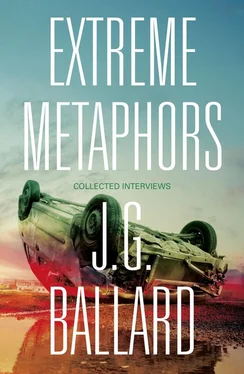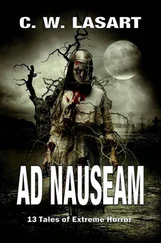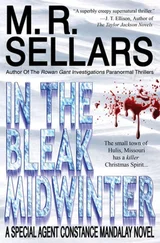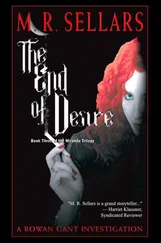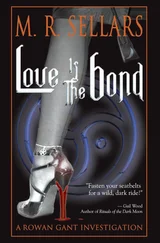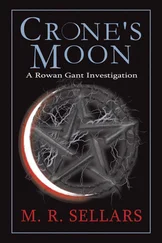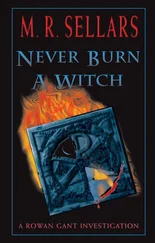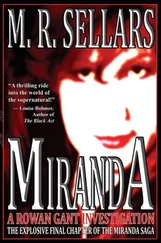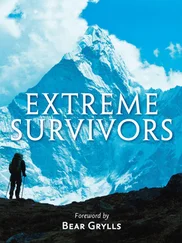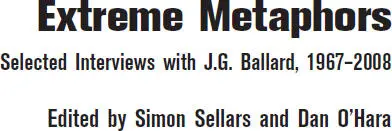

Contents
Cover
Title Page
Simon Sellars – Introduction: A Launchpad for Other Explorations
1967: George MacBeth. The New Science Fiction
1968: Uncredited. Munich Round Up – Interview with J.G. Ballard
1968: Jannick Storm. An Interview with J.G. Ballard
1970: Lynn Barber. Sci-fi Seer
1971: Frank Whitford. Speculative Illustrations: Eduardo Paolozzi in Conversation with J.G. Ballard
1973: Peter Linnett. J.G. Ballard
1974: Carol Orr. How to Face Doomsday without Really Trying
1974: Robert Louit. Crash & Learn
1975: Philippe R. Hupp. Interview with J.G. Ballard
1975: James Goddard and David Pringle. An Interview with J.G. Ballard
1976: Jörg Krichbaum & Rein A. Zondergeld. ‘It would be a mistake to write about the future’
1978: Jon Savage. J.G. Ballard
1979: Christopher Evans. The Space Age Is Over
1982: Werner Fuchs & Joachim Körber. An Interview with J.G. Ballard
1982: V. Vale. Interview with JGB
1983: Sam Scoggins. Ninety Questions from the Eyckman Personality Quotient
1984: Thomas Frick. The Art of Fiction
1984: Peter Rønnov-Jessen. Against Entropy
1985: Tony Cartano and Maxim Jakubowski. The Past Tense of J.G. Ballard
1986. Solveig Nordlund. Future Now
1988: James Verniere. A Conversation with J.G. Ballard
1988: Rosetta Brooks. Myths of the Near Future
1991: Jeremy Lewis. An Interview with J.G. Ballard
1992: Phil Halper and Lard Lyer. The Visitor
1993: Joan Bakewell. Memento: J.G. Ballard
1994: Lukas Barr. Don’t Crash
1995: Nicholas Zurbrugg. Empire of the Surreal
1995: Will Self. Conversations: J.G. Ballard
1996: Damien Love. ‘Kafka with unlimited Chicken Kiev’: J.G. Ballard on Cocaine Nights
1996: Chris Rodley. Crash Talk: J.G. Ballard in Conversation with David Cronenberg
1997: Mark Dery. J.G. Ballard’s Wild Ride
1997: Richard Kadrey & Suzanne Stefanac. J.G. Ballard on William S. Burroughs’ Naked Truth
1998: Zinovy Zinik. Russia on My Mind
1999: Iain Sinclair. J.G. Ballard’s Cinema in the Slipstream of Discontent
2000: John Gray. ‘Technology is always a facilitator’: J.G. Ballard on Super-Cannes
2003: Hans Ulrich Obrist. ‘Nothing is real, everything is fake’
2003: Chris Hall. ‘All we’ve got left is our own psychopathology’: J.G. Ballard on Millennium People
2004: Jeannette Baxter. Reading the Signs
2006: Toby Litt. ‘Dangerous bends ahead. Slow down’: J.G. Ballard on Kingdom Come
2006: Simon Sellars. ‘Rattling other people’s cages’
2006: Mark Goodall. An Exhibition of Atrocities: J.G. Ballard on Mondo Films
2006: Jonathan Weiss. ‘Not entirely a journey without maps’: J.G. Ballard on The Atrocity Exhibition
2007: Hari Kunzru. Historian of the Future
2008: James Naughtie. ‘Up a kind of sociological Amazon’: J.G. Ballard on Miracles of Life
Dan O’Hara – Afterword: Script-writing the Future
Footnotes
Biographies
Index
Acknowledgements
About the Authors
By the same author
Copyright
About the Publisher
Introduction: A Launchpad for Other Explorations Simon Sellars
I
The conditions of J.G. Ballard’s childhood in wartime Shanghai are well known, exposed by the success of his semi-autobiographical novel Empire of the Sun (1984), and Steven Spielberg’s film version of that compulsive self-mythology. Yet pre- Empire , Shanghai was admitted only in metaphor to Ballard’s writing, and the war mentioned en passant in the ubiquitous mini-biographies adorning the front-papers of his novels. A typical example might have read: ‘He was born in Shanghai in 1930 to English parents. The Japanese interned him for almost three years in a civilian war camp. He came to England when he was sixteen. He studied medicine at King’s College, Cambridge. He worked as a copywriter, then as a Covent Garden porter, then as an editor on a scientific journal. He trained to become an RAF pilot. His first professionally published short story was “Prima Belladonna” in 1956. He was a leading light in the so-called “New Wave” of science fiction. He lives in Shepperton, England. Crash is his most notorious novel …’ Occasionally, there would be self-reflexive variations, statements so intense they were surely the handiwork not of bored copywriters but of Ballard himself: ‘He believes that science fiction is the authentic literature of the twentieth century’ (or that ‘science fiction is the apocalyptic language of the twentieth century’). ‘He also believes that inner space, not outer, is the real subject of science fiction.’
Today, given Ballard’s post- Empire canonisation, it’s easy to forget he began as a writer of science fiction, although in the 1960s he established his name with a quartet of end-of-the-world disaster novels that keenly anticipated current conditions surrounding climate change: The Wind from Nowhere (1961), The Drowned World (1962), The Drought (1964) and The Crystal World (1966). In that decade, he also produced a number of short stories that inverted science fiction via one of its most cherished tropes, time travel, using the premise to formulate the fabled theory of inner space informing those early bios. Anticipating Marshall McLuhan and Jean Baudrillard, Ballard demonstrated how encroaching advertising and mass consumer culture played on submerged desire, implanting new, artificial subjectivities to create a schizophrenic underclass. In response to such conditions, his characters retreated into the private imagination – ‘inner space’ – cordoning it off as a virtual ‘nature reserve’, preserving its sovereignty by any means possible. A recurring theme was the idea of escaping or cheating time, precipitated by a period of psychic turmoil. Recording the Dalí-esque motif of stopped or ‘melting’ time, Ballard uses the symbolism of time (that is, the unit of measurement; clock time) as an arbitrary, man-made construct imposing order and control on the free reign and chaos of the unconcious. Faced with the reality of life in that tumultuous decade, inner space for Ballard was a far more strange and compelling setting for science fiction than its traditional environs in outer space.
Coining the slogan ‘Earth is the only alien planet’, Ballard joined forces with Michael Moorcock to lead the British New Wave, producing an extended, linked sequence of fragmentary, non-linear short stories that continued to address the psychosocial effects of the media landscape. These were mainly published in Moorcock’s revolutionary New Worlds magazine, the mouthpiece for the New Wave, and later collected as The Atrocity Exhibition (1969), which, billed as an ‘experimental novel’, cemented his reputation as a dark magus, a writer able to face the most extreme aspects of our culture and divine a secret logic from the chaos.
In the mid-seventies, Ballard mostly abandoned formal experimentation in favour of a more traditional narrative technique, although the subject matter was just as confrontational, perhaps even more shocking for the neutral style encasing it. The novels of this period include Crash (1973), about a cult of bored, middle-class professionals who feel alive only after modifying their bodies via staged car crashes; Concrete Island (1974), about a man who crashes into a patch of wasteland beneath a motorway, subconsciously ‘marooning’ himself in the city; and High-Rise (1975), in which a high-tech apartment block descends into tribal warfare. These seductive, disturbing narratives seek out the edgelands of cities, making strange the familiar landscapes of suburbia, and have proved enormously influential for their clinical portrayal of the new roles we assume from the technological landscape. They have inspired not only writers but also musicians, artists and film-makers, who respond to Ballard’s highly imagistic style (itself influenced by surrealism), and even architects and urbanists, drawn to his penetrating critique of the contemporary urban condition.
Читать дальше
